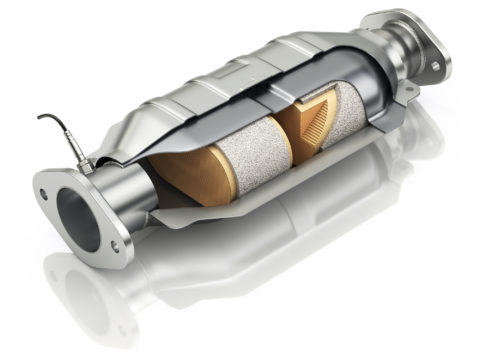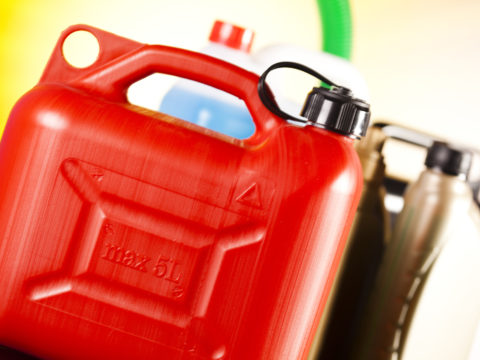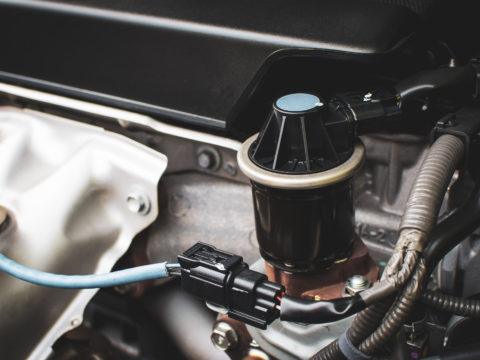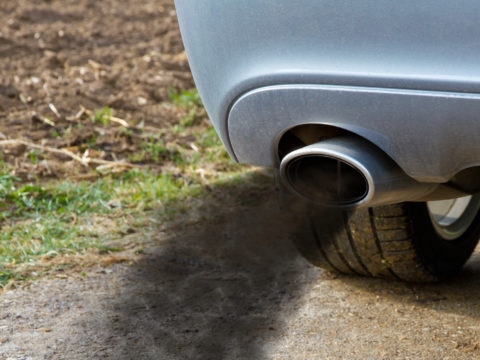Have you ever wondered what “check emission system error” means on a vehicle? This warning light can be confusing and overwhelming, especially if it appears abruptly. But don’t worry – understanding the meaning behind this error is simpler than you think.
The check emission system error is a warning that your emission system is faulty and releases high gas levels into the environment. In this article, we’ll further explore what a check emission system error means on a vehicle, its causes, and how you can fix it.
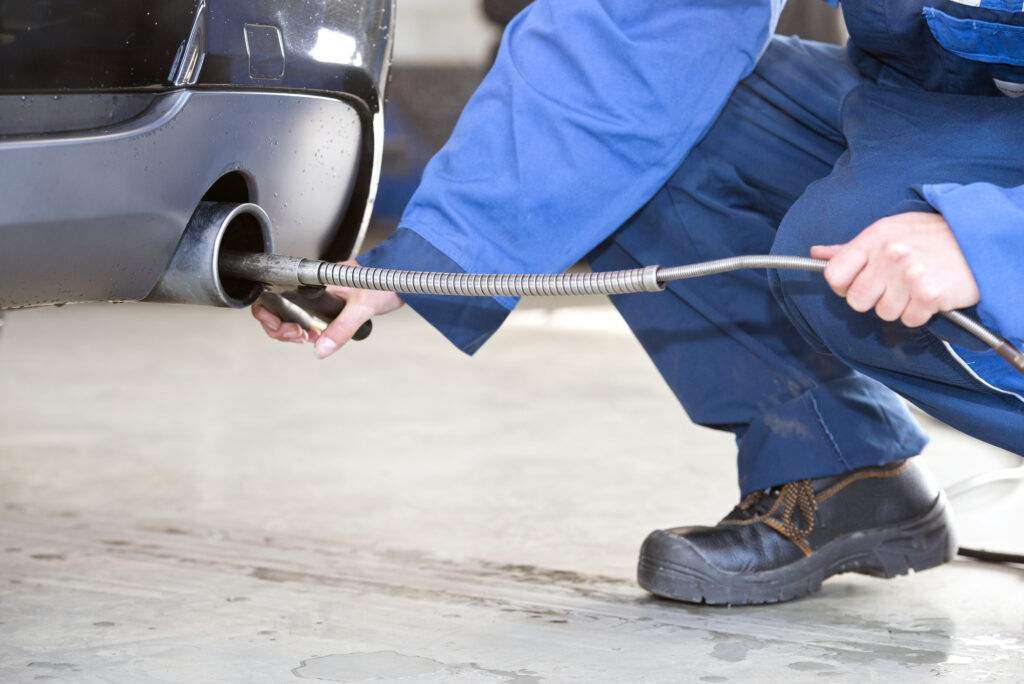
A check emission system error is a fault in the vehicle’s emission system that causes it to produce more pollutants than allowed by law. This could be a problem with the oxygen sensor, catalytic converter, or other parts of the system.
Contents
Check Emission System Light
The check emission system light comes on when a motor releases more pollutants than authorized by local regulations. This error can lead to fines from local authorities if not corrected quickly.
The most obvious sign of a faulty emission system is the appearance of the Check Engine Light on your dashboard. If you see this light, your vehicle’s onboard diagnostic system (OBD) has detected a problem with the emission system.
Here are some signs if you think there’s a problem with the emission system:
- Decreased Fuel Efficiency: A faulty emission system can cause your vehicle to burn more fuel than usual. This leads to a decrease in fuel efficiency and an increase in fuel costs.
- Rough Idling or Stalling: A problem with the emission system can cause the engine to run poorly or stall while idling. If not fixed, it could cause engine misfires.
- Poor Performance: If you have a faulty emission system, your vehicle might not accelerate properly. You might also see higher exhaust fumes from the tailpipe than usual.
- Smell of Fuel: A strong smell of fuel could indicate a leak in the emission system.
Emission Control System Components
There are different types of emission control systems, and they may contain various components. Some of these components include:
- Catalytic converter: This component converts harmful pollutants in the exhaust gas into less harmful emissions through a chemical reaction.
- Oxygen sensor: This sensor measures the amount of oxygen in the exhaust gas.
- Air Injection System: This system injects fresh air into the exhaust system to help burn off any remaining pollutants before they are released into the atmosphere.
All of these components work together to reduce harmful emissions and improve the environmental impact of vehicles.

What Causes Emission Problems in a Car?
The most recurrent trigger of this type of fault is defective components inside your car’s emission control systems, such as worn-out or broken oxygen sensors and catalytic converters. Below are some details about these problems and their causes:
Failed Oxygen Sensor
The function of an oxygen sensor is to measure oxygen levels in the exhaust gas. It then sends this info to the engine control module (ECM), which adjusts the air/fuel mixture to optimize combustion and reduce emissions.
A failed oxygen sensor can cause the engine to run too rich or lean, resulting in increased emissions and decreased fuel efficiency. This eventually leads to higher fuel costs.
Malfunctioning Catalytic Converter
A catalytic converter creates chemical reactions that convert harmful exhaust gas pollutants into less harmful emissions.
If this component malfunctions, it can increase emissions and cause poor vehicle performance.
Evaporative Emission Control (EVAP) System Failure
The EVAP system captures and stores fuel vapors that escape from the fuel tank and prevents them from being released into the atmosphere.
A failure in this system can result in fuel vapors escaping into the atmosphere, causing increased emissions and potential safety hazards.
Vacuum Leaks
Vacuum leaks can cause the engine to run poorly and increase emissions, adversely impacting the environment. Damaged or cracked hoses, malfunctioning gaskets, or other issues can cause these leaks.
Faulty Spark Plugs or Ignition System
Faulty spark plugs or an ignition system can cause incomplete combustion. This can result in increased emissions and decreased fuel efficiency and even cause failure in other components of your emission control system.
Ignoring or delaying repairs on any part of your vehicle will eventually lead to higher repair costs due to additional wear-and-tear or complete breakdowns of other components. Acting quickly to handle any car issues can help save you money.
How To Fix Emission Control System
Diagnosing and repairing a check emission system error is essential for any car owner. It can be done by a qualified mechanic or even as a DIY project.
Before diagnosing an emission system error, it’s necessary to pinpoint the cause by analyzing engine codes, testing sensors, and examining hoses and other components.
Once you have identified where the issue comes from, it’s time to move on to repairs or maintenance tasks needed to correct it.
How Do You Prevent the Check Emission System Warning Light From Coming On?
You should take your vehicle to a mechanic for regular checkups to prevent the check emission system warning light from coming on. That way, they can identify potential faults early on and fix them before they become a big issue and cause problems with the emission system.
A properly functioning emission system reduces vehicle pollutants and keeps air quality safe. Without regular maintenance, a car’s emission control systems can become clogged or worn out, increasing harmful gasses released into the atmosphere.
Regularly inspecting your vehicle’s emission control system can help ensure it’s working correctly and reduce your carbon footprint.
Don’t underestimate the environmental benefits of fixing a check emission system error. Vehicles produce pollutants that can damage air quality and contribute to global warming.
Is It Safe To Drive With Check Emission System?
No. Driving with the check emission system on is dangerous for the environment. Furthermore, faulty components may break down and present danger for you while driving. Therefore, take your vehicle to a mechanic as soon as possible.
Should You Do It Yourself or See a Mechanic?
There are a few options when it comes to repairing a check emission system error. DIY solutions are available for troubleshooting and fixing the problem. Aftermarket parts and products are available to help with repairs.
DIY solutions can save time and money when diagnosing a check emission system error. Many web pages provide info on identifying issues with the emission system, giving step-by-step guidance.
It’s essential to research your vehicle’s specific make, model, and year before attempting any repairs or maintenance yourself, as some systems may require special tools or expertise to diagnose the issue properly.
Ensure you have the necessary protective gear, such as gloves and eye protection, before attempting any vehicle repairs.
However, if you’re not well-versed in vehicles or can’t understand the troubleshooting instructions on the internet, it’s best not to experiment with your automobile. Get the problem checked at a mechanic instead.
Cost of Fixing the Error
Costs associated with fixing a check emission system error vary depending on what you must do. If only minor maintenance is required, such as replacing worn parts or cleaning out debris from air intake systems, costs will likely stay within reasonable limits.
However, major repairs such as replacing catalytic converters or oxygen sensors could quickly add up to hundreds of dollars or more depending on the vehicle make/model/year.
When looking for help with diagnosing and repairing an emission system error, it’s crucial to find mechanics with experience working on your vehicle model year. This way, they can accurately diagnose problems while accessing genuine replacement parts when needed.
Additionally, you should always get quotes from multiple shops before committing to compare the pricing options available before making any decisions about where you want work performed.
Conclusion
Understanding what a check emission system error means on a vehicle is essential. Without proper diagnosis and repair of the issue, drivers can experience decreased performance and increased emissions that could damage the environment.
Take the initiative to investigate and address potential issues with your vehicle’s emission system. A well-maintained emissions system can help reduce harmful environmental pollutants and improve fuel efficiency.

